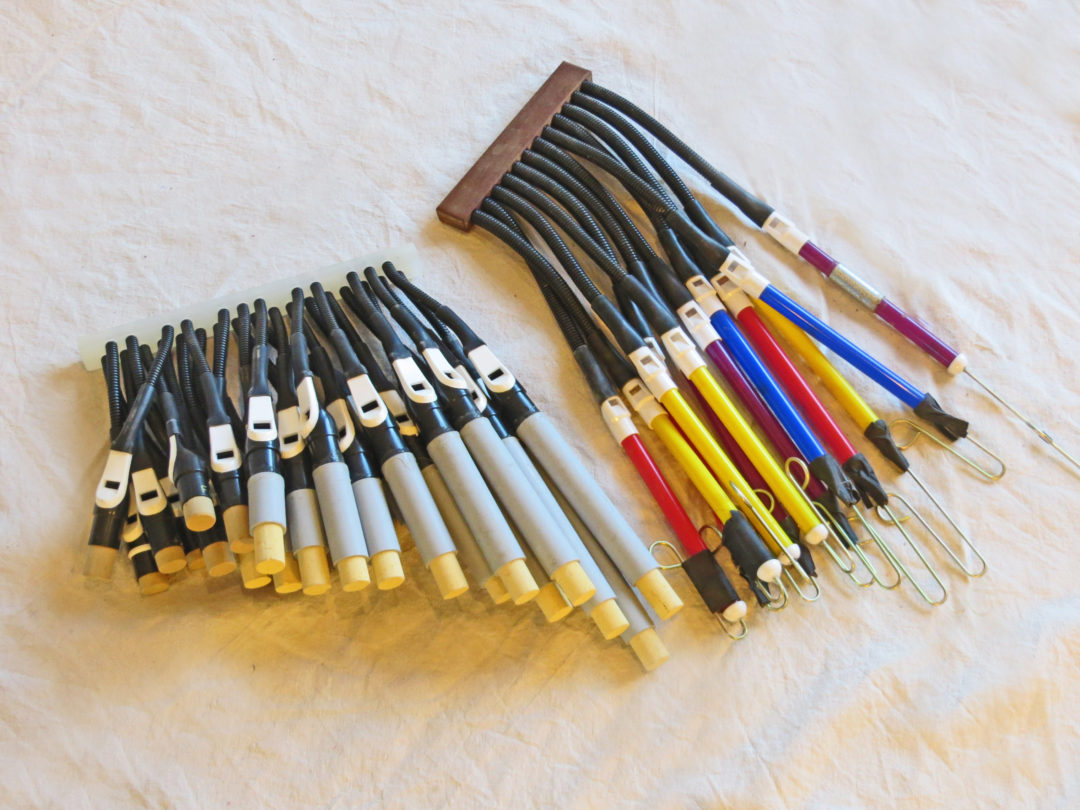

Two factors control the frequency of air puffs created by a siren disk- how fast the disk spins and the number of holes that pass the air stream each time the disk turns. The rate at which puffs are created is the frequency of the sound. Put another way, if five hundred holes pass the air flow each second, the frequency of the sound is 500 Hz. If the holes on the disk are evenly spaced, the puffs are created at regular time intervals- a periodic vibration. How does it work? Every time the air stream lines up with a hole on the disk, a puff of air is created behind the disk. The faster the drill spins- the higher the pitch. If the straw is lined up with a band of holes, you hear a flute-like sound when you blow through the straw. This 2016 Scientific American article shows a modern design using a cordless drill, a drinking straw and construction paper. When a rotating disk with regularly spaced holes is placed in a stream of air, the air stream is broken up into a series of air puffs (see diagram below):Ī stream of air from the tube (c) passes through the spinning disk (a) while the hub (b) is driven by a string (f). Siren disksĪround 1799, John Robison used a similar idea to invent a musical siren. More recently, musical instrument designer Bart Hopkin created a musical instrument based on the idea. In the 1830’s, Felix Savart resurrected and refined Hooke’s design to study the limits of human hearing, creating what are probably the first man-made ultrasonic sounds. The apparatus provided the first clear mathematical connection between measurable vibration frequencies and musical pitches.

Hooke’s knowledge of gears allowed him to accurately measure how often the gear hit the card based on how fast the operator turned the crank. The operator turns the hand crank slowly and a series of gears steps up the spin rate. The diagram above shows the basic apparatus. Savart Wheel diagram from Popular Science Monthly Volume 3, p.8. The faster the wheel spins, the higher the pitch. When you place a card against the edge of a spinning gear, the card vibrates and produces a tone. If you’ve ever stuck a playing card in a spinning bike wheel, you understand the basic idea. In the late 1600s, Robert Hooke- the same guy that’s famous for his work on springs- invented a device now called a Savart Wheel. For a quick overview of the ideas from this chapter, check out Bruce Yeaney’s Savart Wheel video.

Even though sources of sound vibrate quickly- from tens to thousands of vibrations per second- scientists were able to measure frequency well with the help of a centuries old invention. Perception of sound 11 Frequency and pitch: How do we know? Connecting frequency and pitchīy the 1600’s, scientists understood a lot about how the pitch we hear is connected to how the sound source vibrates.


 0 kommentar(er)
0 kommentar(er)
